On the road with the history-making engineer, producer, and artist, this guitarist keeps it simple.
Jeff Kollman is a lifelong gigging guitarist whose resume stretches from Deep Purple’s Glenn Hughes to Chad Smith’s Bombastic Meatbats. Since 2017, he’s been performing with famed engineer, producer, and songwriter Alan Parsons, who worked on Abbey Road, Dark Side of the Moon, and a host of other records that you’ve probably owned for decades. It should come as no surprise, then, that as a member of the Alan Parsons Project, Kollman’s gig is to sound great. And he does so with a quick-and-easy rig.
After getting into Nashville’s Ryman Auditorium from a sweaty gig from the night before in Georgia, the band got set up and PG’s John Bohlinger rolled in to catch up with Kollman about his simple road setup.
Brought to you by D’Addario.
Inspiring and Practical
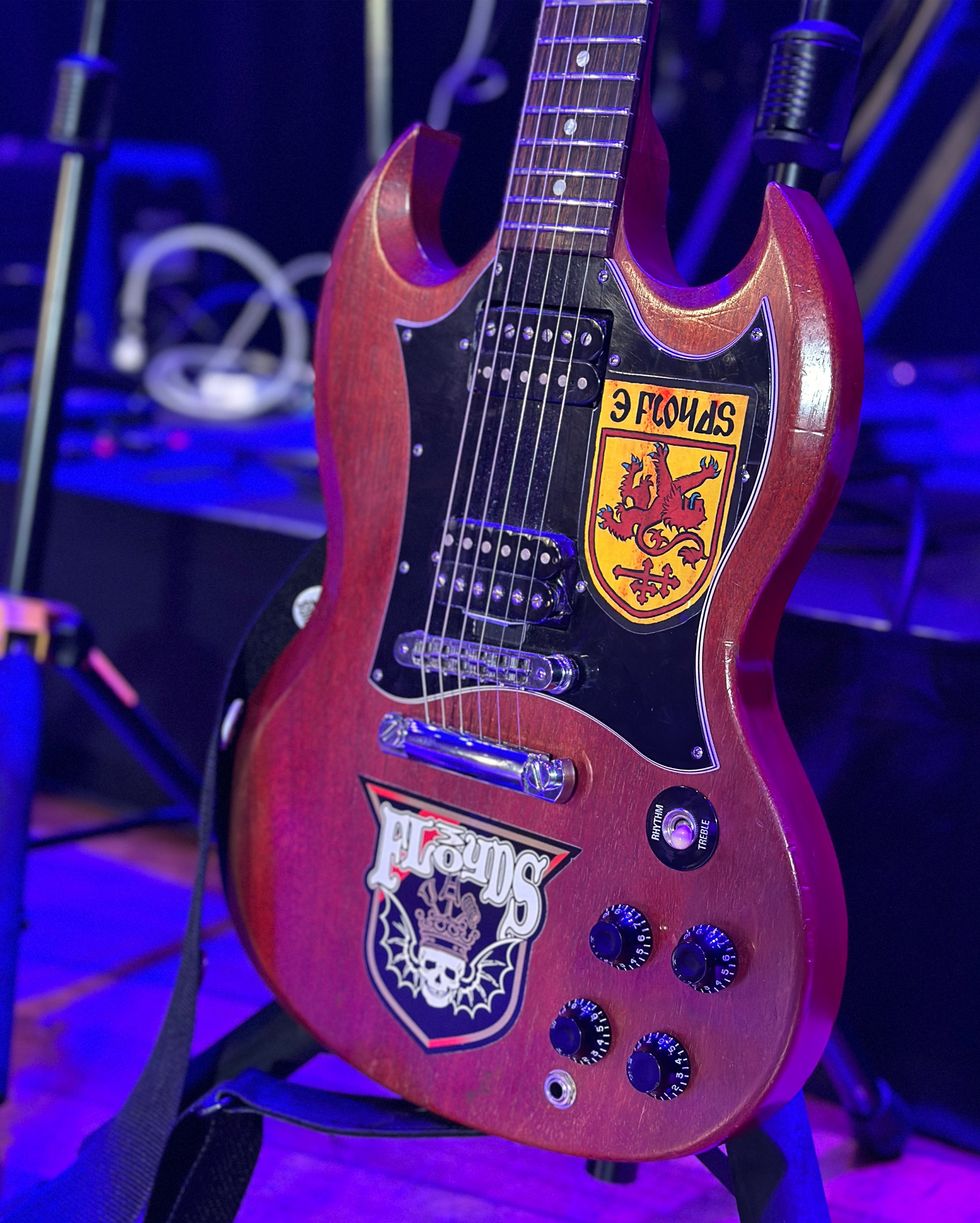
Kollman has a pair of No. 1’s he takes on the road. The first is this all-stock SG Faded Special he picked up used for $560, which he points out is “really resonant” and “really woody,” with great sustain. “It inspires me,” he says, “and it’s inspiring, I think, to kids to know they don’t have to spend five grand on a guitar.”
The SG stays in Kollman’s drop tuning with the low E dropped to C and the A dropped to G. He keeps all his guitars strung with Ernie Ball Super Slinkys (.009–.046).
Surfy Strat
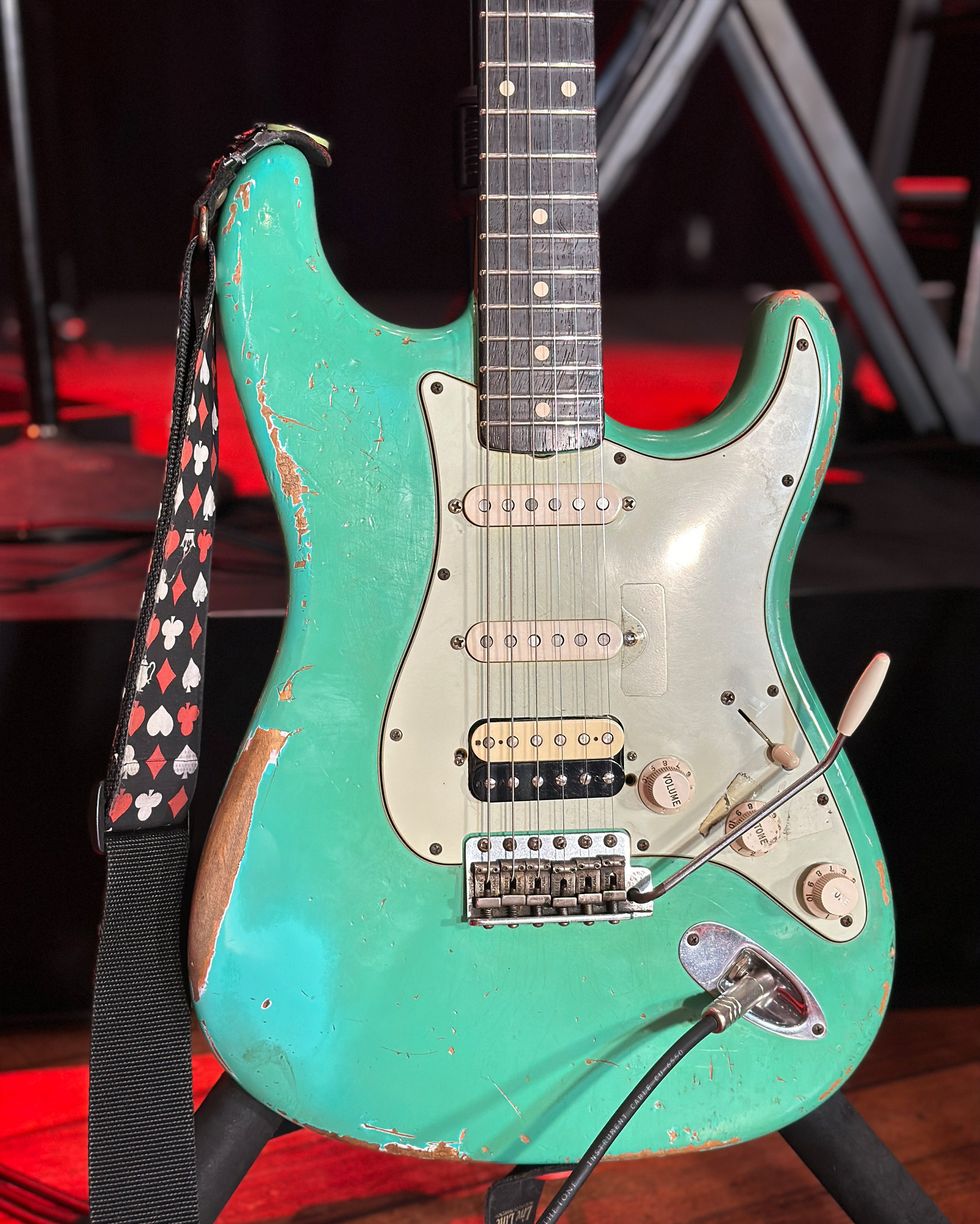
Kollman’s other No. 1 is a ’59 reissue Strat from Wildwood Guitars in Colorado. It features a Brazilian rosewood fretboard and John Cruz custom-wound pickups in the neck and middle. The guitarist isn’t entirely sure what humbucker is in the bridge position, but it’s low output, coil tapped, and he loves it. This Strat stays in standard tuning.
A Lucky Les Paul
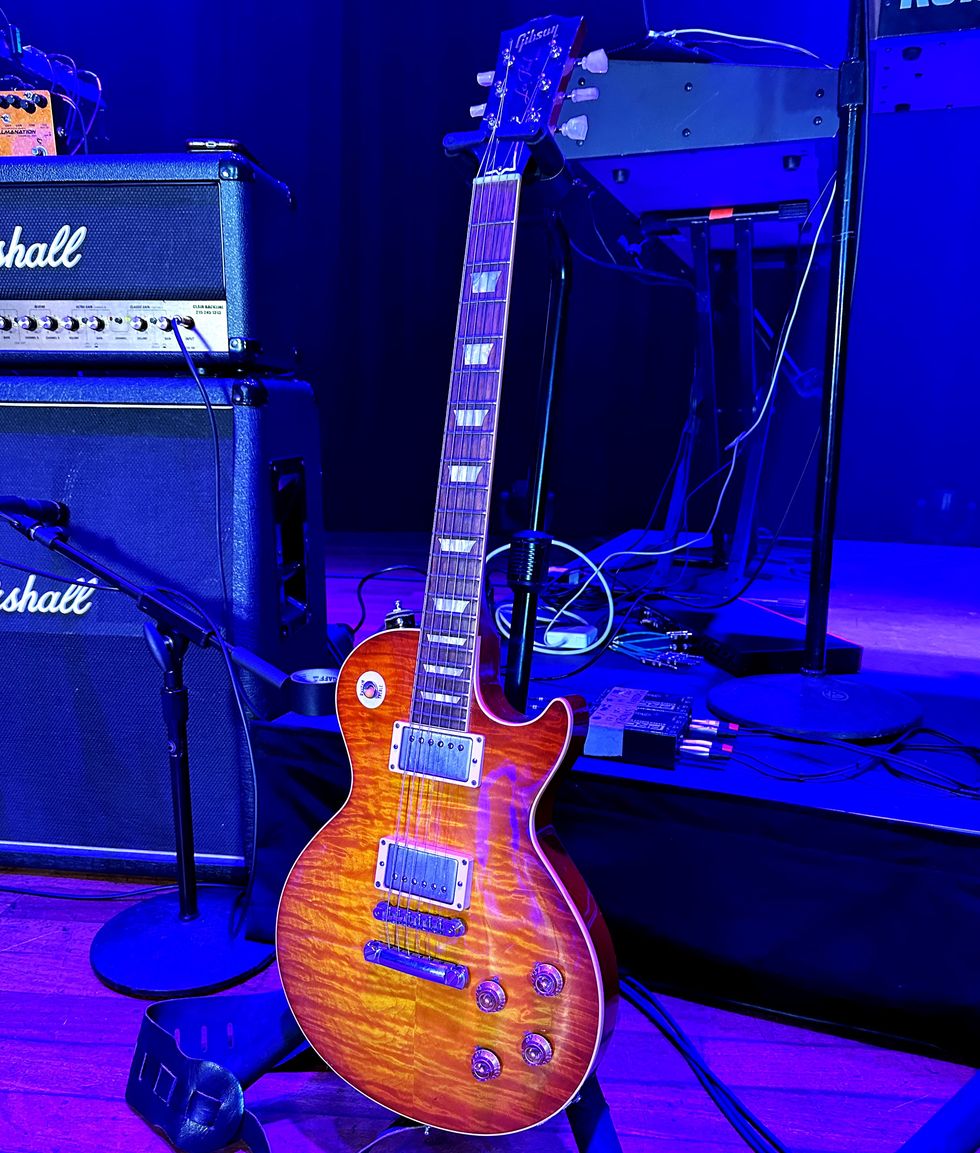
Kollman received a tip from pal Greg Koch that this Les Paul, from a limited edition run of featherweight LPs built for Wildwood Guitars, is a “tone beast,” so he jumped on it. At 7.98 pounds, it came as advertised. Kollman loaded it up with an original vintage set of PAFs.
Easy Amp Recipe
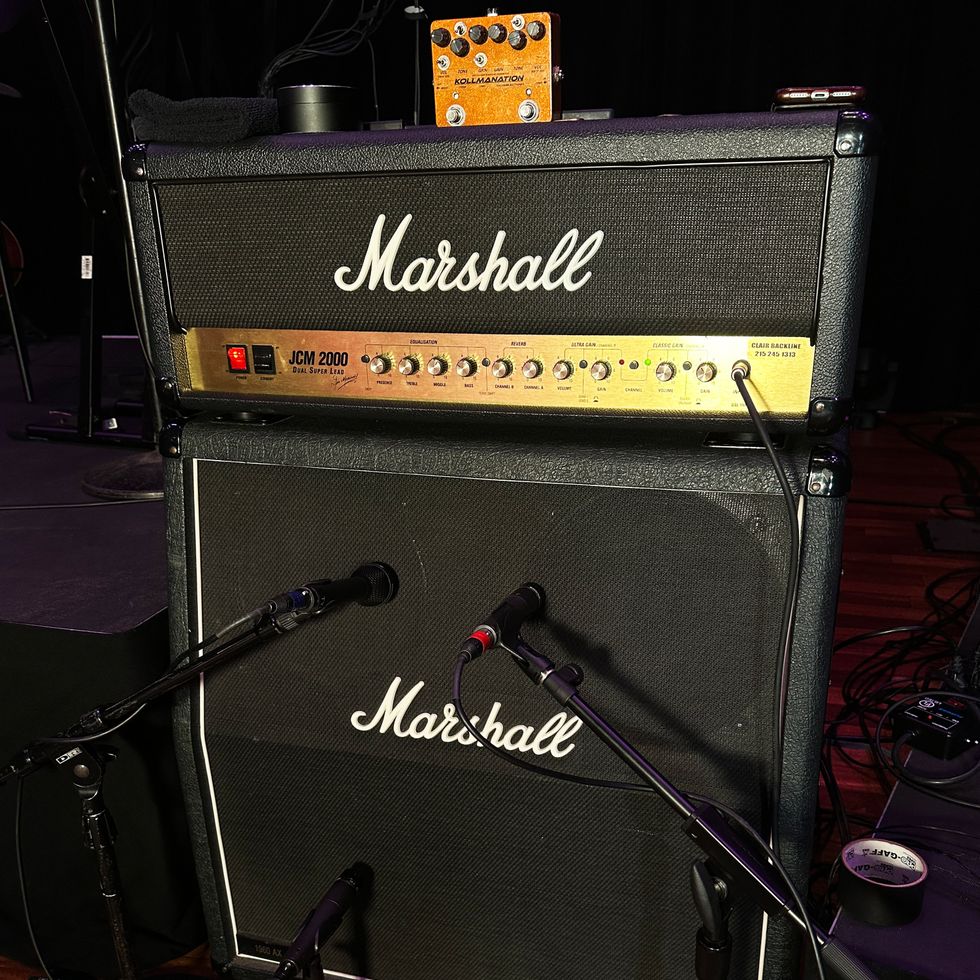
Since the Parsons Project does lots of fly dates, Kollman needs a tone recipe for an amp he can find anywhere. He requests a Marshall JCM2000, uses both the clean and dirty channels, and says, “I can flop and go in 5 minutes and have my sound,” while showing off the EVH-style dirt and “ethereal cleans” he can dial-up.
Functional and Fun
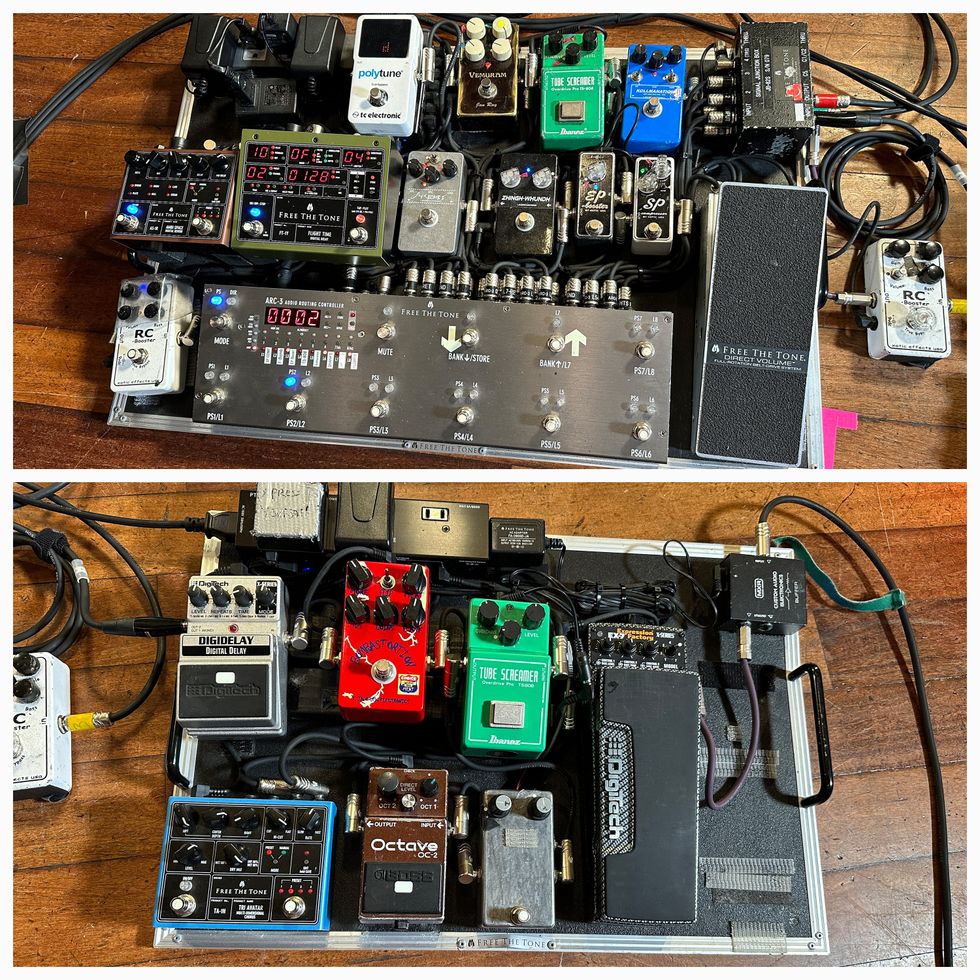
Kollman rolls with a pair of pedalboards built by Japan’s Free the Tone. The first is his practical board that is loaded up with an Xotic EP Booster, SP Compressor, and a pair of RC Boosters; some signature gear he co-designed with Tim Jauernig that includes his F-Bomb 3, Kollmanation distortion, and a Zhingh-Whundh (which he says is on the down-low currently);
an Ibanez Tube Screamer TS-808, and a Vemuram Jan Ray dirt box. They’re complemented with a Free the Tone Flight Time Digital Delay and Ambi Space Digital Reverb, and it’s all kept in tune with a TC Electronic PolyTune. Kollman only steps on his Free the Tone Direct Volume and his Free the Tone ARC-3 Audio Routing Controller.
His second board is “just toys” and includes a DigiTech Digidelay, a signature Tim Jauernig Bombastortion, another TS808, a Free the Tone Tri Avatar Multi-Dimensional Chorus, Boss OC-2 Octave, an Octavia clone prototype built by Tim Jauernig, a DigiTech EX-7 Expression Factory, and an MXR Custom Audio Electronics buffer.







![Rig Rundown: AFI [2025]](https://www.premierguitar.com/media-library/youtube.jpg?id=62064741&width=1245&height=700&quality=70&coordinates=0%2C0%2C0%2C0)












 Shop Scott's Rig
Shop Scott's Rig















![Devon Eisenbarger [Katy Perry] Rig Rundown](https://www.premierguitar.com/media-library/youtube.jpg?id=61774583&width=1245&height=700&quality=70&coordinates=0%2C0%2C0%2C0)













